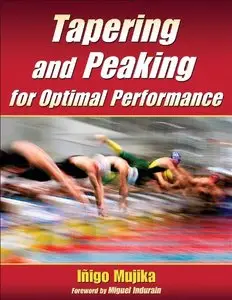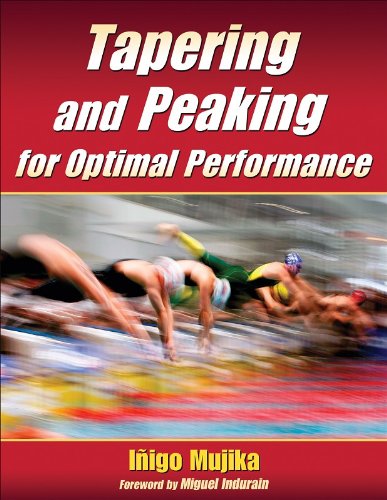Tapering and Peaking for Optimal Performance by Iñigo Mujika
English | 2009 | ISBN: 0736074848 | 224 pages | PDF | 3,7 MB
English | 2009 | ISBN: 0736074848 | 224 pages | PDF | 3,7 MB
Tapering and Peaking for Optimal Performance offers in-depth discussion of the science, strategy, and program design of the tapering phase of training. This first-ever book devoted to the subject presents current scientific data on tapering, its physiological and psychological effects, and how these effects relate to athletic performance.
Featuring various training models and experiential knowledge, this book allows readers to design optimal tapering programs for each athlete.
Though most coaches and sport scientists are aware of the key role of tapering in preparation for competition, many tapering programs are developed by a trial-and-error process, often leading athletes to fall short of their optimal performance. In Tapering and Peaking for Optimal Performance, author Iñigo Mujika, one of the foremost researchers on tapering in sport, presents various models and explains current scientific data on tapering and its effects on physiological and psychological factors that support or hinder performance. Using this information, coaches, athletes, and sport scientists will be able to do the following:
-Design optimal tapering plans specific to athletes and the competition.
-Set realistic performance goals for competition.
-Avoid negative outcomes associated with a deficient tapering program.
Parts I and II of the text provide the academic reader with a clear understanding of the foundations, characteristics, and physiological and psychological changes associated with tapering. Readers will explore performance implications of tapering, examine tapering with the use of mathematical models, and learn the unique aspects of tapering for team sports. Special elements with clear explanations of scientific data and performance information are provided to help readers—even those without a strong background in science—grasp the theoretical concepts presented in the text. A running glossary also helps readers quickly define terms, and summary sections in each chapter provide quick reference and an overview of the content.
In part III of the book, 16 internationally known coaches and athletes share the tapering strategies that enabled them to succeed in major international competitions. Readers will find sport-specific strategies for individual endurance sports, sprint and power events, precision sports, and team sports. By combining the experience-based knowledge of elite sport performers and coaches with the performance data presented in parts I and II, athletes, coaches, and students will learn to create optimal tapering programs for every sport.
Tapering and Peaking for Optimal Performance is a powerful resource for athletes, coaches, and sport scientists to use in dealing with the important tapering period of a training program with increased confidence. By combining current scientific research with real-world examples, this text presents the most complete look at tapering available, and it encourages further study of this vital and sometimes elusive aspect of training for success.



